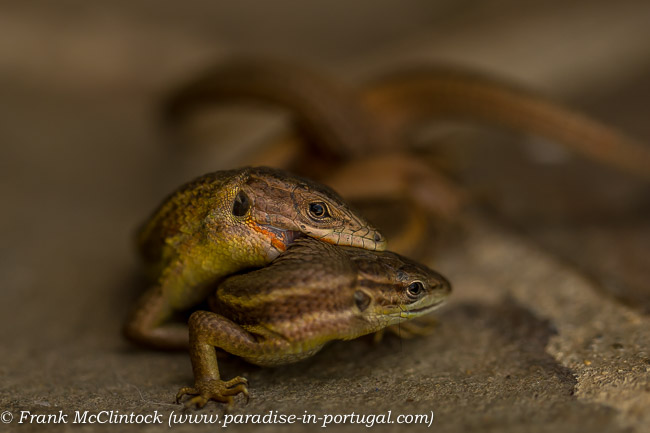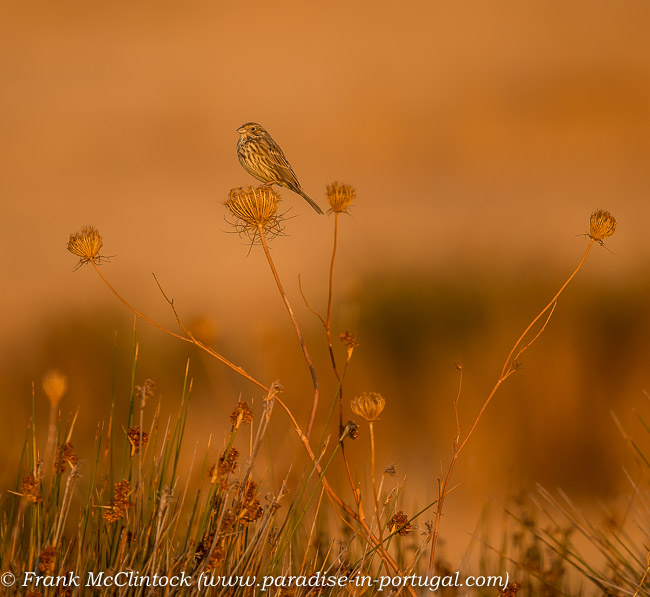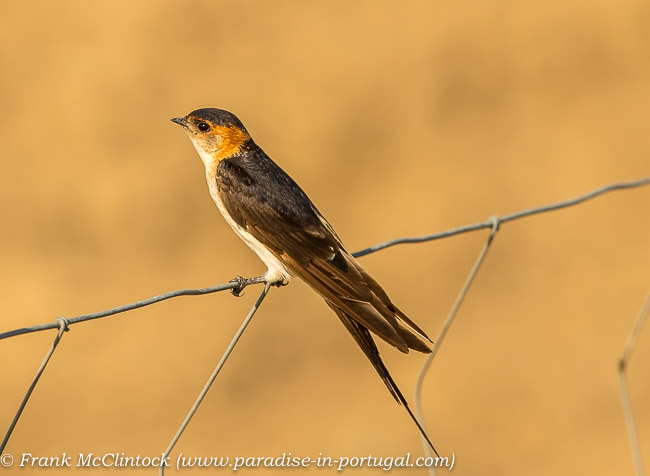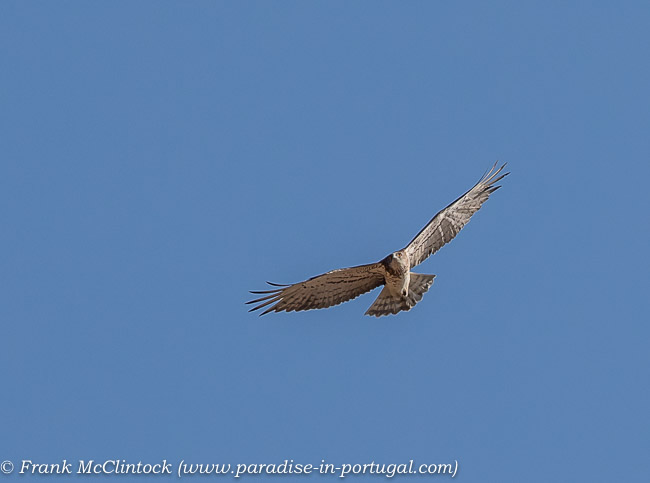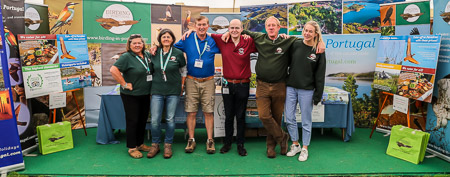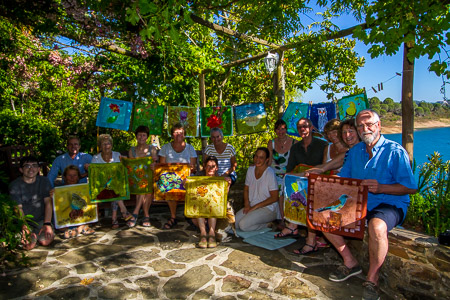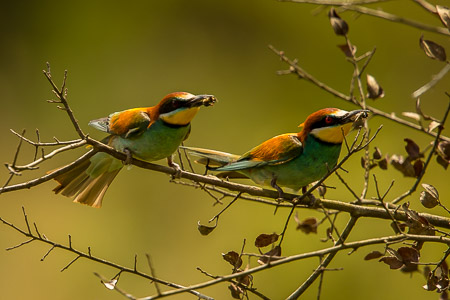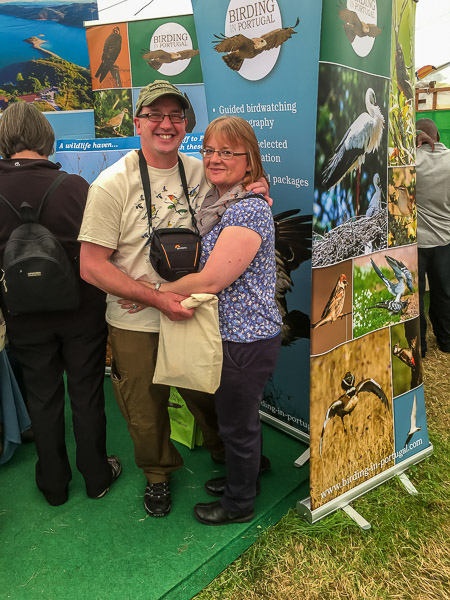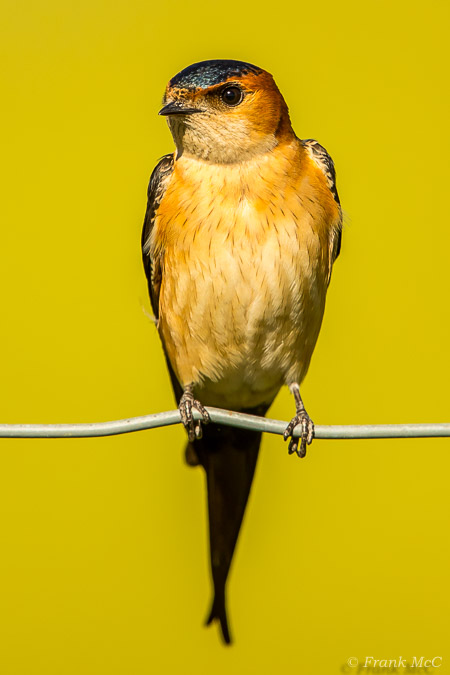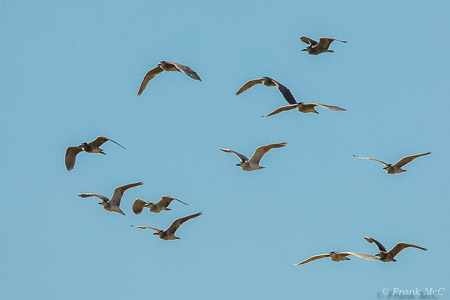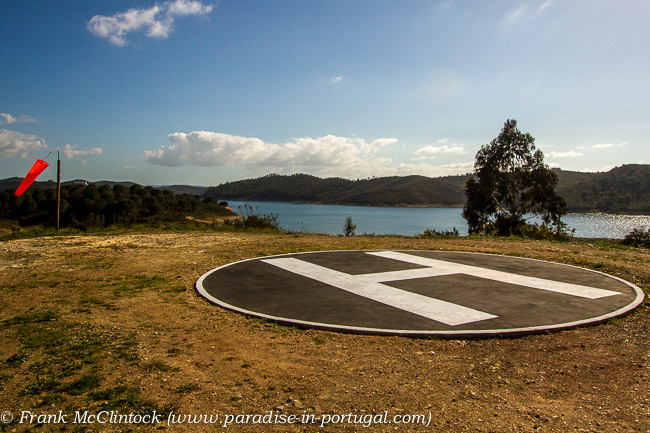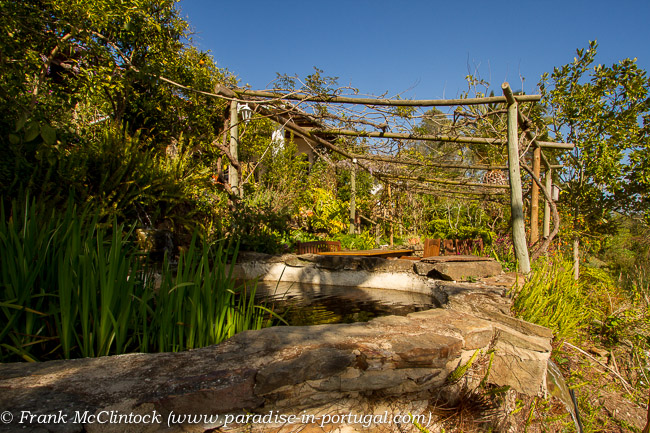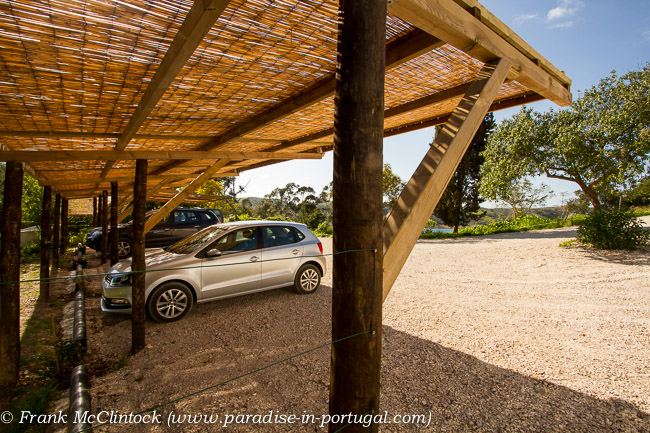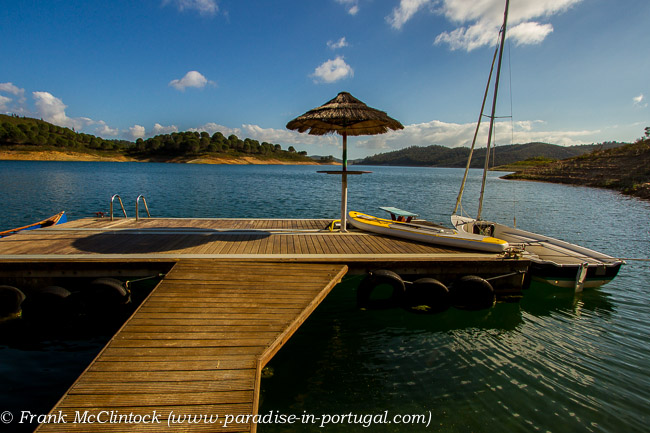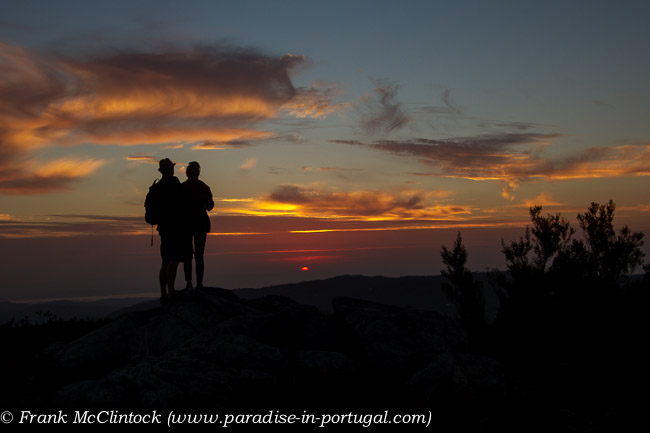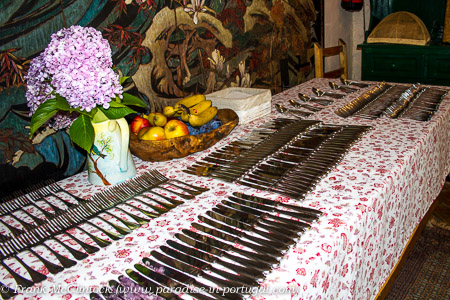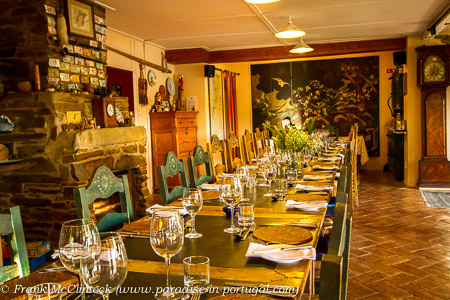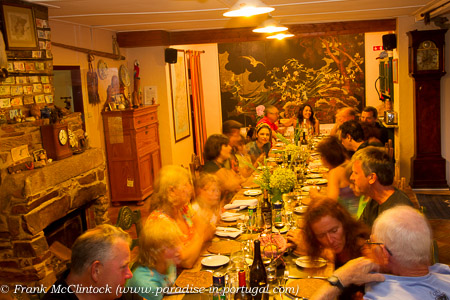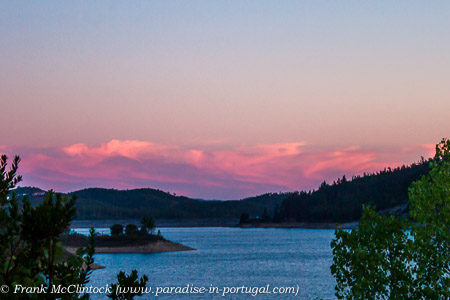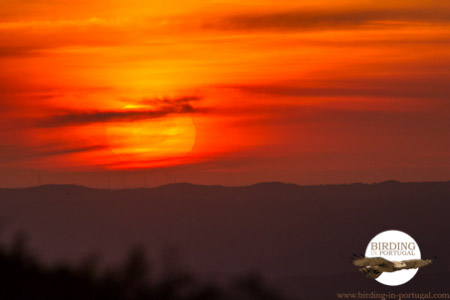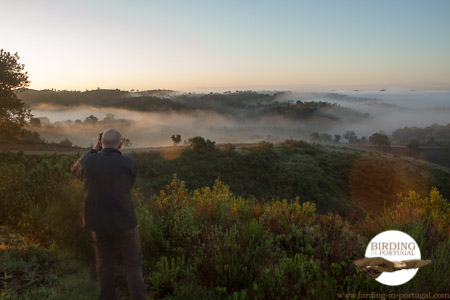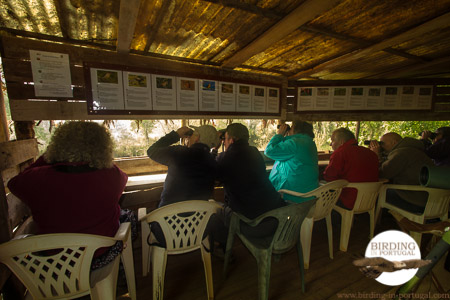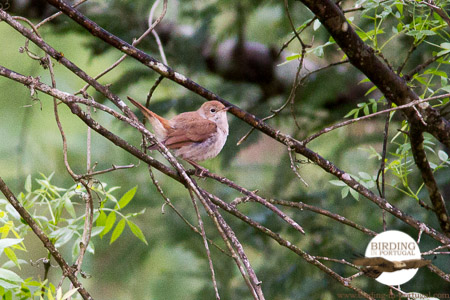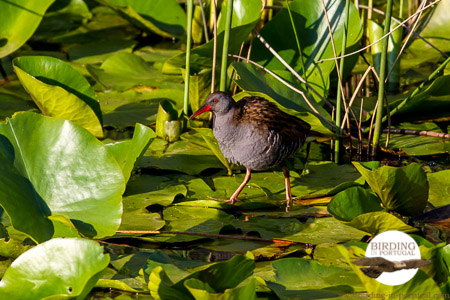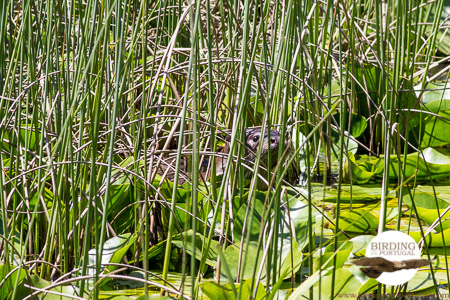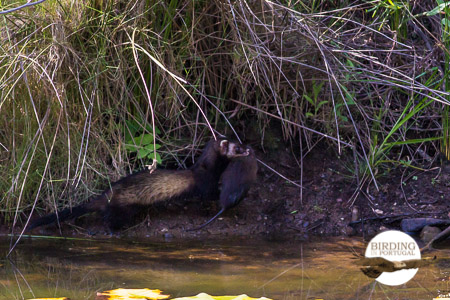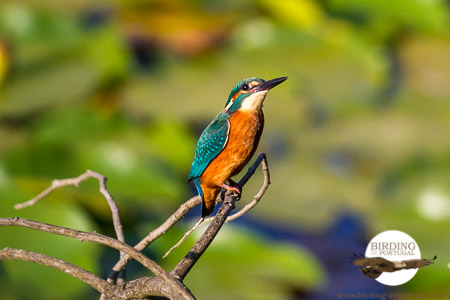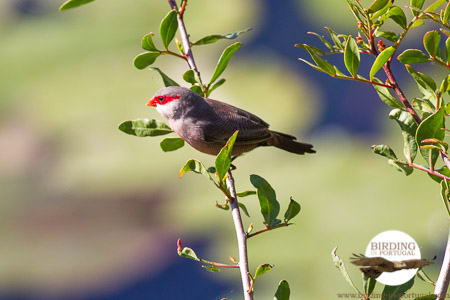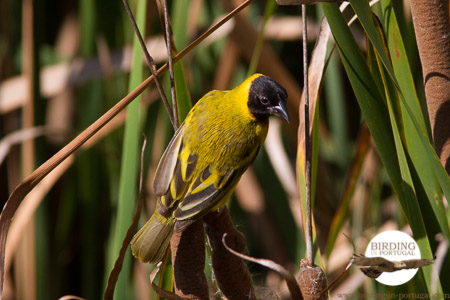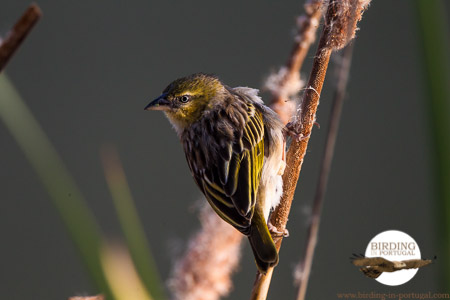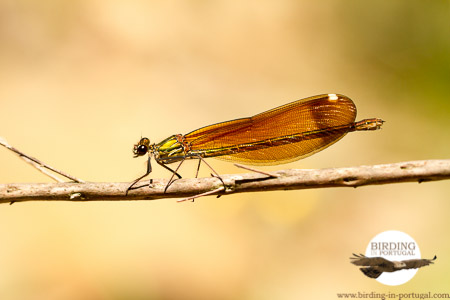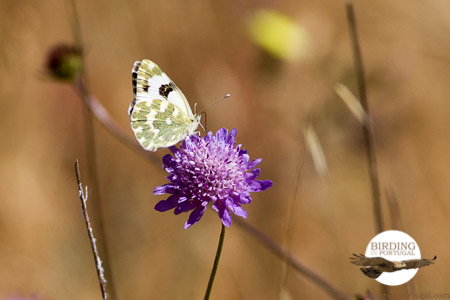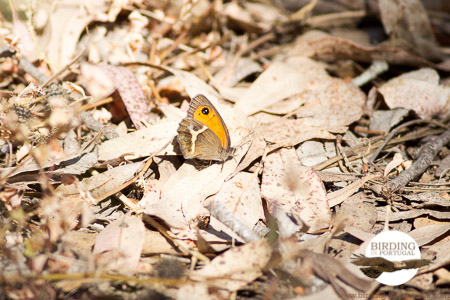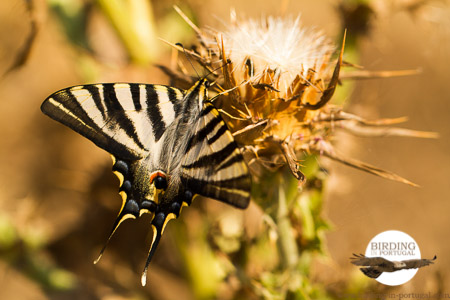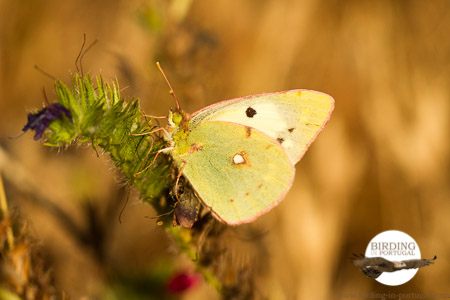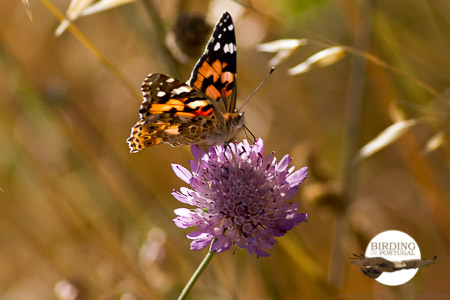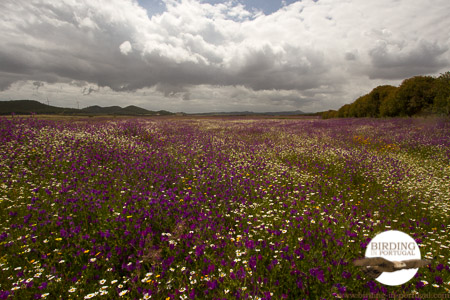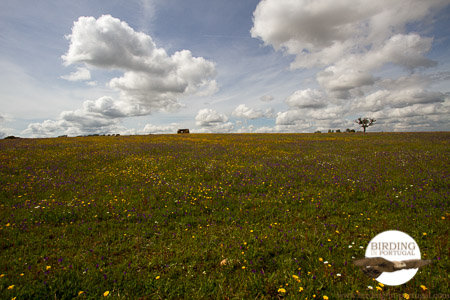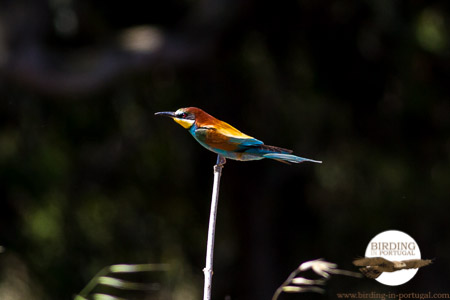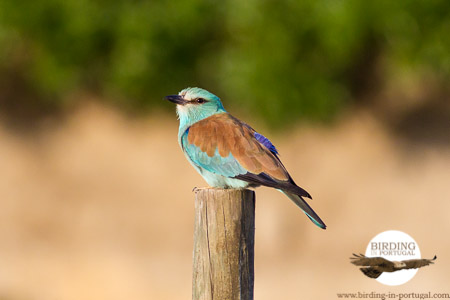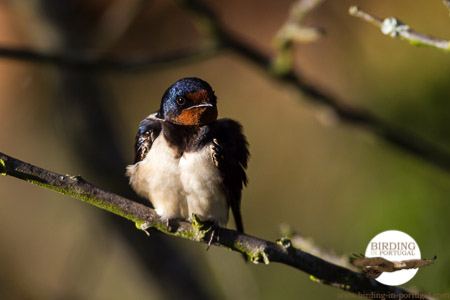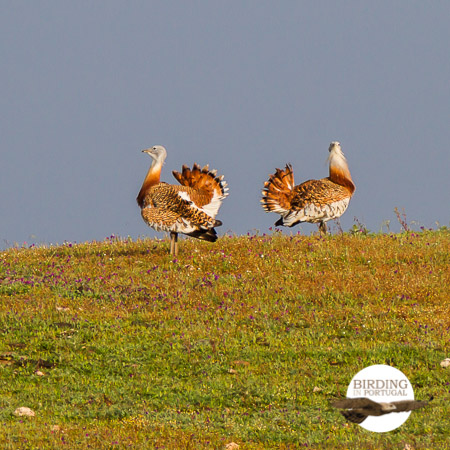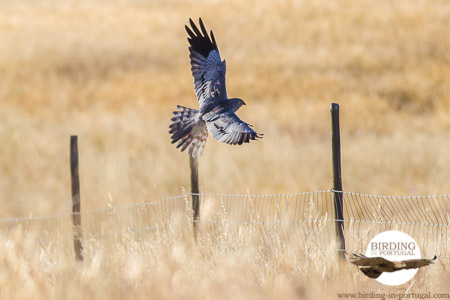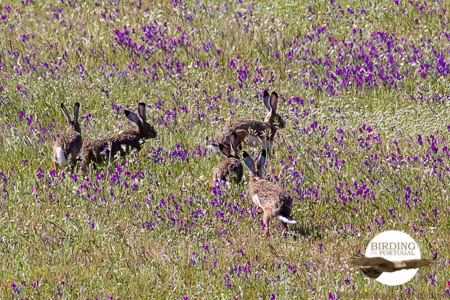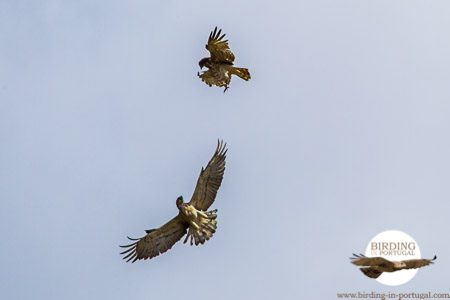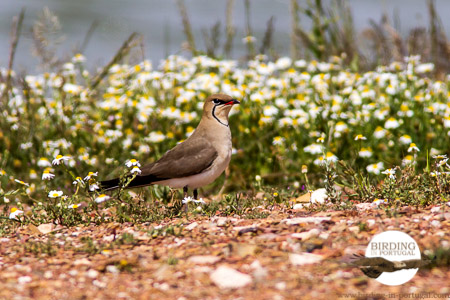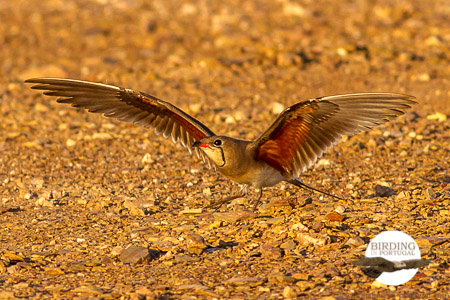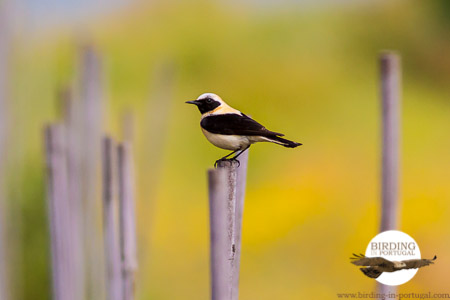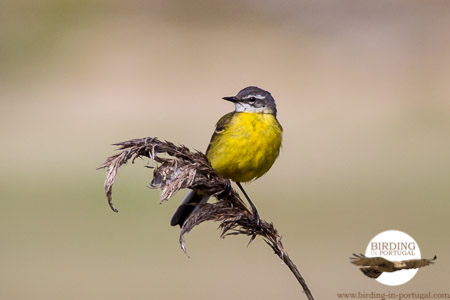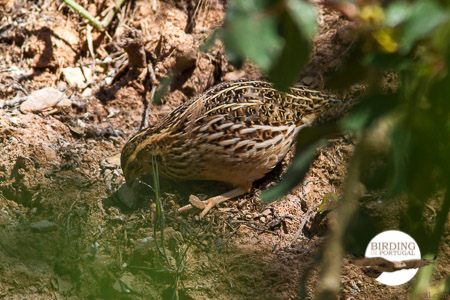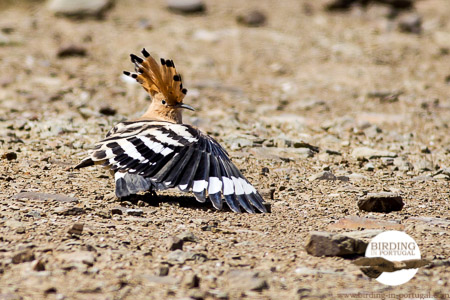The Birdfair Raffle run by “Birding in Portugal!” has been drawn again and Chris and Vic have booked their stay here next year – we’re looking forward to showing you our beautiful area, like the sunrises, above, or these gorgeous lizards, below.
Another Draw
Sadly the first winners of the Birdfair Raffle never claimed their prize – so we’re going to draw it again this Saturday, 16th September!
There are three prizes to be won again this year and I so hope someone claims them this time … the first prize is for a week’s accommodation for two people in either a double or a twin bedded room here at the Quinta, the nerve-centre of “Birding in Portugal“, and the beautiful home of Frank and Daniela McClintock.
The 2nd and 3rd prizes are for three free mid-week nights at the same location, and all prizes have to be enjoyed next year between 15th March and 15th July or 15th September and 31st October.
We’ll post the winners names up here on the 16th and you’ll have a week to claim your prize by simply emailing us here at the Quinta through this website with the same address you gave us at the Birdfair. Nothing simpler, so “Good luck” and we look forward to hearing from you.
News, news, news!
Wow! It’s been a FULL-ON year for the Quinta! I don’t think we’ve ever been so busy and the best bit about it was the amount of past guests returning again and again – I think the winner must be Sheila who’s racked up thirteen visits, but she’s closely followed by Calum and several others, and it’s been a rare week when we haven’t had at least one or two couples staying who’ve stayed before. It’s a great, great feeling to be running the place with this amount of positive feedback, so my thanks go to all you who’ve come and stayed here over this season – and we look forward to seeing you again in the future!
We seem to be becoming known in the “Retreat” market as well – so much so that we’re going to have another website soon called “www.retreat-in-portugal.com”, so watch out for that one. Marie Therese King is running her “Batik’n’Birding” week again in a few week’s time, and there’s still a room free so if that’s your bag, (and with the weather we have at the moment it’ll be fantastic!), get in touch with her soon.
Talking of Birding, since February there’s rarely been a week when we didn’t have an excursion but the Spring Birding Season was especially busy, and in June we closed the Quinta for five days to give Daniela and I a break.
Daniela took the opportunity for some pampering with her parents and Elias in Vienna, and I, well I of course went birding! Des took me off to the Farne islands where we had a blast, (you can see some of the pictures we took here), and it took weeks before the smile was wiped off my face.
Then it was the summer and it was busy, busy, busy (with the Birdfair in August as well, where we once again donated over £500 towards their conservation efforts worldwide), and now … well, the Autumn migration’s begun and we’re straight into it as it seems to be an early kick-off this year.
Our Bee-eaters, normally so punctual, left at least 5 days earlier than normal and I saw our first Northern Wheatear coming through before the end of August, which is again early. Speaking with Archie this morning – he’s running a chateau in the south of France this summer – he said he’d noticed it too, with large movements of Rollers and raptors noticeable every day heading for the passes through and around the Pyrenees.
We drew the raffle last week but nobody’s claimed their prize – it’s surprising how often it happens, so we’re going to send out an email to everyone who entered as a reminder and draw it again on the 16th September.
That’s what happened last year and we’re looking forward to welcoming Kenny & Chris, last year’s second week’s lucky winners, who are coming over next month.
Boasting again
It’s always good to be written about, but yesterday we had a double whammy as not only did Zeiss do a piece about us featuring some of my photos on their blog, (which you can read here), but the Times also recognised us as being one of the top 20 “hotels” in Portugal, (which you can access here), so, much as I loathe boasting, it’s only right that I should spread the word isn’t it?!
Added to which of course I can make loads of friends green with envy by posting some pictures, which I hope look as good on your computer as they do on mine – though of course my computer comes complete with a “You lucky so-and-so, Frank” sticker.
Above is a Red-rumped Swallow from a recent day out; always a favourite species for me, but they don’t often stay still long enough to be able to grab a shot like this, and below a dozen Black-crowned Night herons that floated over the top of us the day before yesterday – thank you, Ray, for letting us know they were coming!
Finally, just a quicky of the first Bee-eaters we saw this year. They arrived dead on time again, on the 2nd April, and we were lucky enough to find them already excavating their nest holes in a sandy bank, competing with a respectable colony of Sand Martins.
A quick bonus book
A week ago a very good friend emailed me with the offer of making a couple of photo books, so I thought I’d make one of the birds we’re lucky enough to see in the area around the Quinta. Hope you like it!
Another winter’s work!
Another winter’s done’n’dusted and sometimes I have to take stock and actually walk around to see what we’ve achieved to make the Quinta an even better place to spend time.
It’s easy of course when you’ve got something like our new Helipad, (that’s ever so slightly “in yer face”), but so much of what we all do here in the winter ends up being below ground – or at least relatively unnoticeable. All the irrigation that we’ve installed this winter for instance, or the old roofs we’ve replaced, well, no-one in their right mind’s going to go “Wow!”, but it all takes time.
Even the “above-ground” garden alone is pretty well a full-time job now, as every year we have a blitz on it during November and December to keep it in check, prune it back, get rid of the old or dead and replace with bright new horticultural beauties. It takes time to grow back, and at this time of year it’s still feeling a tad dazed, but now the days are getting longer and there’s still some moisture left in the ground it’s recovering swiftly, and it’ll look right as rain within no time. The terrace below for instance, nude now, will be a tangle of roses, grapes and wisteria before another month has passed.
However, there are some things that stand out as much as the Helipad, and one that’s been on the cards for years, and that we’ve finally got around to doing something about, is a decent spot of shade for cars. The brief from Daniela was that it should fit into the surroundings and be in keeping with the Quinta’s ethos – as well as having as few poles that she could bump in to as possible and enough space so guests didn’t bash doors etc.
Following weeks of model-making, planning and cost analysis, it’s built now and so far so good; you’ll have to let me know what you think when you next visit!
What else is new? Oh yes, in line with our constant quest for reduction of our carbon footprint, we have been able to reduce yet further our genny use. Of course it’s another of those things that no-one’ll notice but ourselves, but to cut down from three hours a day to half an hour is quite a reduction, and eases us all the time closer to being 100% run off solar energy; now we have to save up for a new set of main batteries!
Something that our guests will notice this year though are two new SUPs – that’s Stand-Up Paddleboards for the uninitiated – which included me a few weeks ago! I haven’t tried them yet; far too chilly should I fall in, but you’re welcome!
Â
Some sunrises are just better than others!
Couldn’t resist posting this shot, taken this morning from the top of Foia just south of the Quinta.
We were on a “Birding in Portugal” day, and it’s always best to start it off at sunrise, so there we were, dead on time, when up run two models and set the shot off perfectly!
It was a great day out too, with over 200 Booted Eagles seen along with Black Storks, Short-toed Eagles, loads of Red-billed Choughs and more Northern Wheatears than you could shake a stick at, but from a photographer’s point of view, this picture just took the biscuit.
Good news from Salgados and the Birdfair
The picture above was taken a week or so ago from Birding in Portugal‘s Golden Oriole Hide in the Quinta’s garden as they got ready for the start of the Autumn Migration. They’ve left now, along with the Golden Orioles too, dead on time as ever. I find it extraordinary that they’re so punctual; over the last twenty years or so I’ve been keeping records of when our local Bee-eaters arrive and depart, and they’ve never been more than 36 hours out during all those years, arriving on the 1st April and leaving on the 31st August.
But enough gossip, let’s get down to some nitty-gritty … Great news from Salgados! This is the wetland in between Armação da Pera and Albufeira that we’ve been trying to save from being destroyed by over-rapacious development. I was asked to keep stumm about this over the last year as we didn’t want my soap-boxing to spook the judges while they ruled on the admissibility of the corrupted Environmental Impact Assessment carried out by the developers.
I say “corrupted” as the developers EIA somehow failed to note the largest colony in the world of a CITES’ red-listed species of plant! This is Linaria algarviana and it only exists in the Algarve … on the proposed development site this species has one of its last strongholds and this is made even more important by also being the largest. Rather surprising that they missed it, don’t you think?! Any way, we noticed its absence from the report even if they didn’t in their assessment and we raised a stink and challenged it, and for the past year or so it has been going through the courts, but now the judgement has been made and it has gone in our favour with a total ban on any development until an impartial assessment has been carried out over the course of the next year.
We’re not out of the woods by any means, but for the time being we should celebrate this small stepping-stone victory and thank those hard working souls behind the scenes who have gained us some breathing space, principally SPEA, A Rocha, Quercus, Almargem and their lawyers who have got us this far.
Next bit of good news is the Birdfair Raffle winners’ names, and the Kingfisher above is one of the birds you’re most likely to see when you claim your prize, as this was shot from our Water Rail and Kingfisher Hide down by the riverside a couple of days ago.
This is a Raffle Prize that we give away every year when we attend the British Birdwatching Fair in Rutland, UK. This Fair is the largest of its kind in the world and is always one of the highlights of our year, for as well as running the Raffle on our stand there, (whose prize you can read about below), we also give away a week’s accommodation as an item in their auction to help raise funds for species protection.
The Raffle itself has the same prize as that of the auction – the first prize is one week’s accommodation in a room for two here at the Quinta anytime between now and the end of October 2015 or from March 15th to July 15th 2016 – subject to availability of course! – and the winner this year is Liz Hughes.
Congratulations Liz, and thanks for contacting us; we look forward to welcoming you to the Quinta.
One of the runner-ups has contacted us and wins three mid-week nights accommodation at the same remarkable venue during the same time-frame and with the same conditions, so we look forward to welcoming him here too.
For those unlucky enough not to win this year, my commiserations … better luck next year.
August Mayhem
This time of year seems to be a never-ending series of meals – and before each one all the cutlery has to be polished. Over the last few weeks I’ve taken to doing it myself when I can, (yes, it took me by surprise too!), and the above is a normal August meal’s worth. I know, a bit pernickety to polish them and then lay them down like this just to pick them all up again a couple of minutes later and lay up, but it looks nice for the short while they’re there!
Ten minutes later and, bingo, the table’s laid …
… and ten minutes after that, aided by a nice glass of wine or two, there’s the hubbub of lively conversation while we all get stuck in to another of Daniela’s delicious meals …
… while outside the window Nature lays on another stunning light show for us across the lake!
Oh, I nearly forgot, our new website is going live any day now, (so let me know what you think please), and one more thing … the Quinta’s exhibiting at the Birdfair in Rutland next weekend so come and see us if you’re able. We’re on Stands 90 & 91 in Marquee 2 under the name “Birding in Portugal“, (not “Birds and Nature” or “Birdwatching Tours in Portugal” who are one of our dastardly competitors!) . See you there!
Some Nature shots from this Spring
It’s about time I did a quick update on what’s been happening at the Quinta over the last couple of months …
Anyone who reads this will know that we’re pretty “Nature Orientated” here and do a fair amount of Nature Trips from the Quinta as “Birding in Portugal“. One of the best times to get down’n’dirty with nature is before anyone gets up so I’ve been seeing a fair few sunrises recently, and they’re always spectacular, but the one above, taken from the top of Foia, was one of the best.
Even when we left “late” after the sun had risen, we were treated to wonderful views from the “Top of the World”, especially during the early Spring with the mist rising out of the valleys surrounding the Quinta.
These later mornings have often been expeditions to the new “Water Rail Hide” down in Santa Clara which has proved a real success, able to seat eight people fairly easily and with wicked views over a slow moving part of the River Mira where something always seems to be happening.
One of the stars of the show there has been Cetti’s Warblers, normally such a difficult species to get a glimpse of, and of course we’ve had the resident pair of Water Rails showing well most days …
There were several weeks when they were noticeable by their absence and we were concerned that they’d been taken by one of the Otters that live along this stretch of the river,
and then when we saw the Polecat with a Water Vole in its mouth we were doubly sure that they’d been eaten by these fierce predators,
but a week later they were back in view again so we needn’t have worried.
The Hide is a great place to see Kingfishers also, as well as Common Waxbills, who nested literally underneath us.
Maybe it wont be that long before we get to see another escapee there, as it’s perfect habitat for Black-headed Weavers, who seem to be found in ever-increasing numbers down in the Algarve. This is the male,
and this the female. I’m not sure really which is the more beautiful …
But it wasn’t just birds and mammals in the Water Rail Hide. There were Dragonflies and damselflies – like this female Copper Demoiselle,
and a great assortment of Butterflies too. Western Dappled Whites,
Spanish Gatekeepers,
Southern Scarce Swallowtails,
Berger’s Clouded Yellows,
and a fair smattering of Painted Ladies,
among many others. The countryside roundabouts has been, as always, stunning this Spring and the flowers unsurpassable. Huge swathes of Corn Marigolds, Viper’s Bugloss, Camomile Daisies and Poppies seemingly everywhere one looks,
and the Butterflies have been making full use of them all.
My mother used to say that this is what the British countryside used to look like; I wonder whether my children will be saying the same to their offspring about the Portuguese countryside in years to come. I certainly hope not of course, but I have noticed a sharp decline in the numbers of some bird species that used to be very common. Bee-eaters for instance seem to be becoming fewer and harder to find,
though other species seem to be on the increase. Rollers are being aided by nest boxes put in place by SPEA and the ICNF and there are some days when we see more of them than the Bee-eaters that used to be so common.
Barn Swallow numbers, from my very limited understanding, appear to have stabilised, and though I am afraid that this is only temporary, we’re lucky enough to still have reasonable numbers around the Quinta.
Great Bustard numbers are increasing and Portugal is apparently the only country in the world where this is happening, (barring of course the UK who continue to import them to their re-introduction scheme), and though they disperse at this time of year now that their breeding season is over, it is still easy enough to see double figures on any day out to the Plains.
Montagu’s Harrier numbers appear to be stable,
and this might be due to the availability of huge numbers of prey items such as Iberian Hares out there. I have never seen so many as I have this year. Wherever I go in the Alentejo they seem to be in greater concentrations than ever before and several times I have come across more than five together, (I cropped one out of this picture!),
and though these are not high on the diet of Short-toed Eagles, they are a prey item, especially when young, and may have some bearing on the increasing number of these birds also.
One species that we’ve been lucky enough to see a huge number of this year is my favourite, and I beg your indulgence therefore that I post up here three, (yes three!), pictures of them, but they are extremely special, quite rare and definately sexy, so here you go, tararraarrraaa boom, please give a big hand for Collared Pratincoles!
A couple of years ago I was told of a place that regularly hosted breeding pairs of these birds and visiting it one day I came across the owner of the land in question who was there issuing instructions to an engineer to deepen the lake around which the Collared Ps were nesting. As a ground nesting species they are particularly vulnerable so I asked him if he would be so good as to leave an island where they could breed in peace, to which he kindly agreed.
What a success! That colony, previously limited to just a few pairs, now has over 50 and not only are they increasing in numbers but they’re also easy to appreciate as the island is only just offshore and can be approached without disturbing the birds, hence photo opportunities are easy and it’s really not difficult to get shots like those above – or the one below.
The area nearby has also attracted a few pairs of Black-eared Wheatears this year so they’ve been an added bonus whenever we visit.
What else? Every Nature trip has had its stars – like the Yellow Wagtails breeding on the coast and giving us such good views this year,
but sometimes we haven’t had to go far at all. The Quail below was pecking around right outside the back door earlier on this year, and this picture – not the best I’m afraid – was actually taken out of the kitchen window …
All in all it’s been a busy Spring as I’m sure you can see, and I should get on now with some essential maintenance around the Quinta, so I’ll sign off, wishing you all well, and letting this Hoopoe take the bow.

